Thanks to the half-dozen readers who responded to my call for photos; our tank is now somewhat replenished and I can keep this going for a while. But please think of this site if you have good wildlife photos.
Today’s photos come from Jim Blilie of Washington State, but were taken by his son Jamie. Jim’s captions are indented, and you can enlarge Jamie’s photos by clicking on them.
Jamie is now a freshman at Washington State University (WSU) at Pullman Washington. He is thriving there. We love WSU. It’s very welcoming and is focused on student success. Jamie is studying engineering. Some of these photos were taken during backpacking trips he has taken to Idaho through the WSU Outdoor Recreation Center, a wonderful service WSU provides. Jamie is the wildlife photographer of the family, though has become a good landscape photographer as well.
Jamie did not identify this bird, photo taken a few feet from our house in Klickitat County, Washington; but I think it is a Western Kingbird (Tyrannus verticalis). Any help with a positive ID would be welcome:
Bumblebee, species uncertain. Taken on the trail to Lookout Mountain, Oregon, east of Mt. Hood:

Red-breasted nuthatch (Sitta canadensis) and an unknown species of flying ant, taken on Lookout Mountain, Oregon, east of Mt. Hood:
Golden Mantled Ground Squirrel (Callospermophilus lateralis), also taken on Lookout Mountain, Oregon, east of Mt. Hood:

A similar looking rodent: Based on his location in the mountains of the Idaho panhandle, I think this is a Red-tailed Chipmunk (Tamias ruficaudus), although the eponymous part is not visible in the photo. Jamie took this photo on one of his backpacking trips in northern Idaho:
Also taken on one of his backpacking trips to Idaho (Selkirk Range, close to Upper Priest Lake): A very small brown spider (note the size of the adjacent moss). We were unsuccessful in identifying this spider:
A Steller’s Jay (Cyanocitta stelleri), taken on our place. We love the beautiful blue and black plumage of these jays. These are very common here in winter. In summer they seem to move to higher elevations (we are at 2000 feet (610m) above sea level) and then the Scrub Jays (Aphelocoma californica) move in for the summer. The Steller’s Jays can make a pretty good mimic call of the Red-tailed Hawk’s scream (Buteo jamaicensis):
My favorite of the bunch: A coyote (Canis latrans) in a snowstorm, taken from our back deck. The coyote was perhaps 100 yards away:
A beetle at 5600 feet (1707m) elevation in Oregon, taken on the Flag Point Lookout Tower. Also unable to identify this beetle:
A Cyanide Millipede (Harpaphe haydeniana). This millipede can exude hydrogen cyanide gas as a defense! The photo was taken on the hike to the former fire lookout site, Sleeping Beauty, Skamania County, Washington. This is a favorite hike (though unrelentingly steep) because of the very good views of Mount Adams from the top:
Finally, a ringer: Jamie and me on top of Lookout Mountain with Mount Hood behind, just a day or so before he headed off to university:
Equipment:
Nikon D5600 (1.5 crop factor)
Nikkor AF-P DX 18-55mm f/3.5-5.6 G VR lens
Nikkor AF-P DX 70-300mm f/4.5-6.3 G ED lens
Sigma 150-600mm f/5.0-6.3 DG OS HSM lens
Canon PowerShot SX530




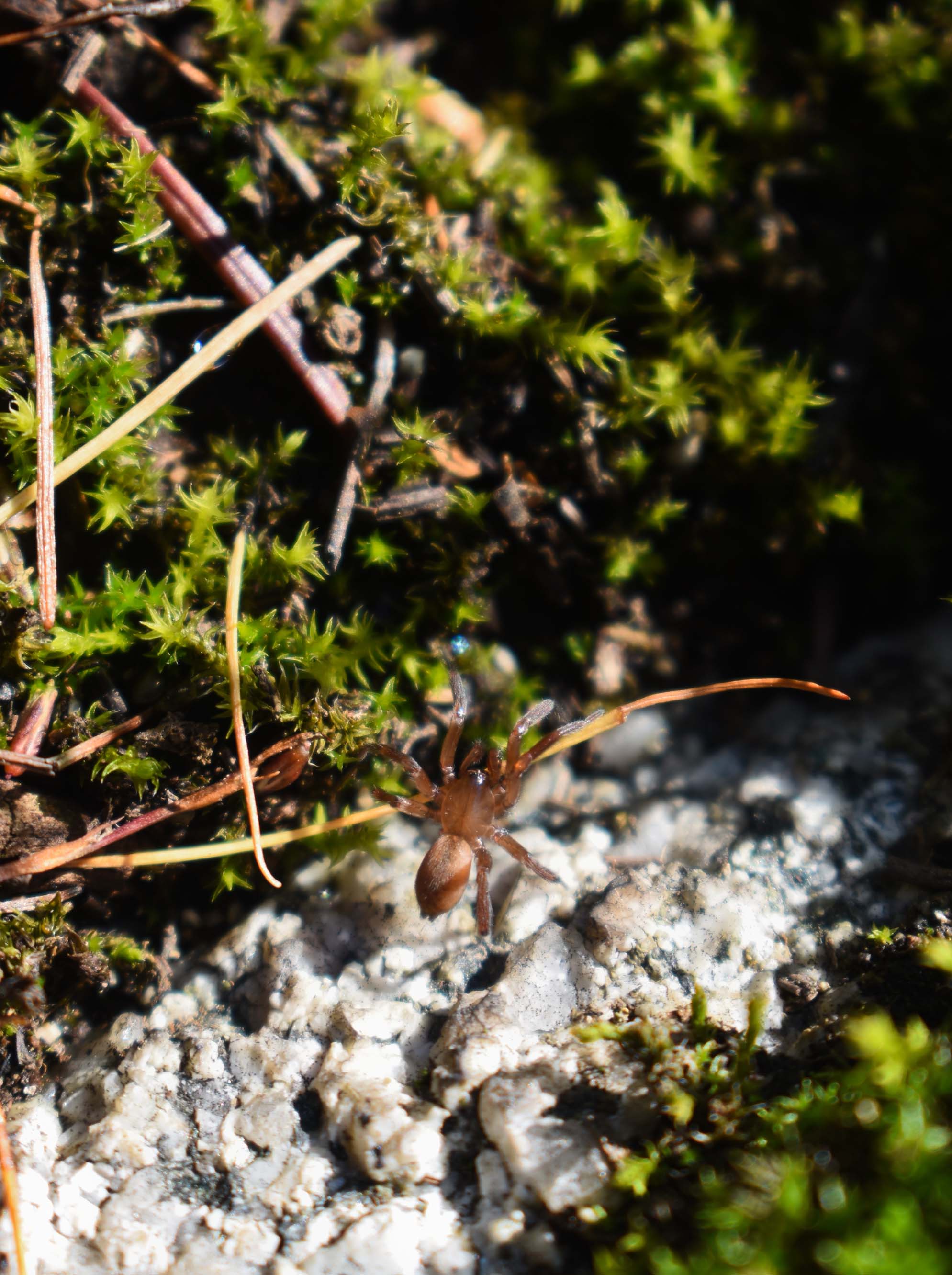
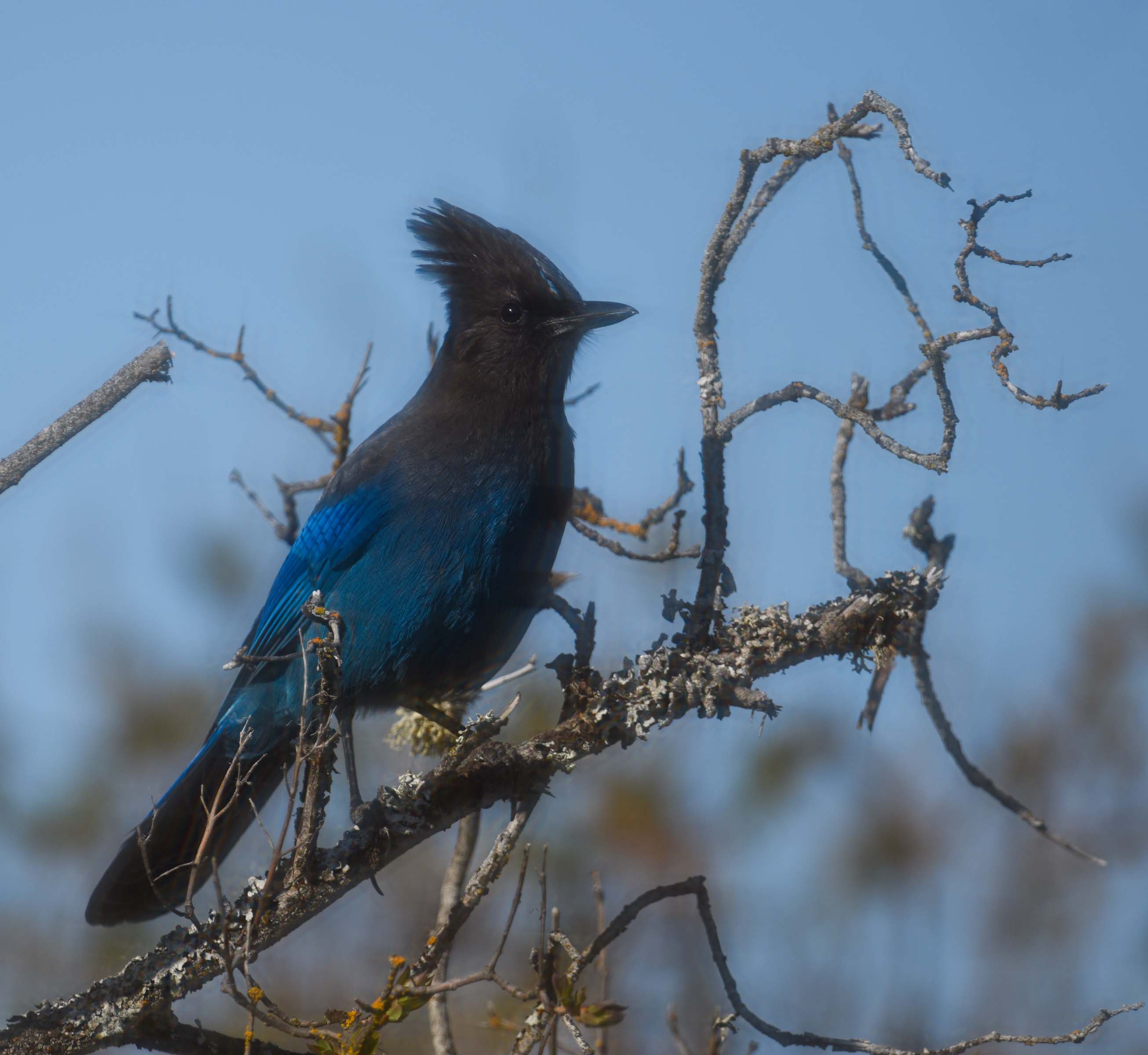

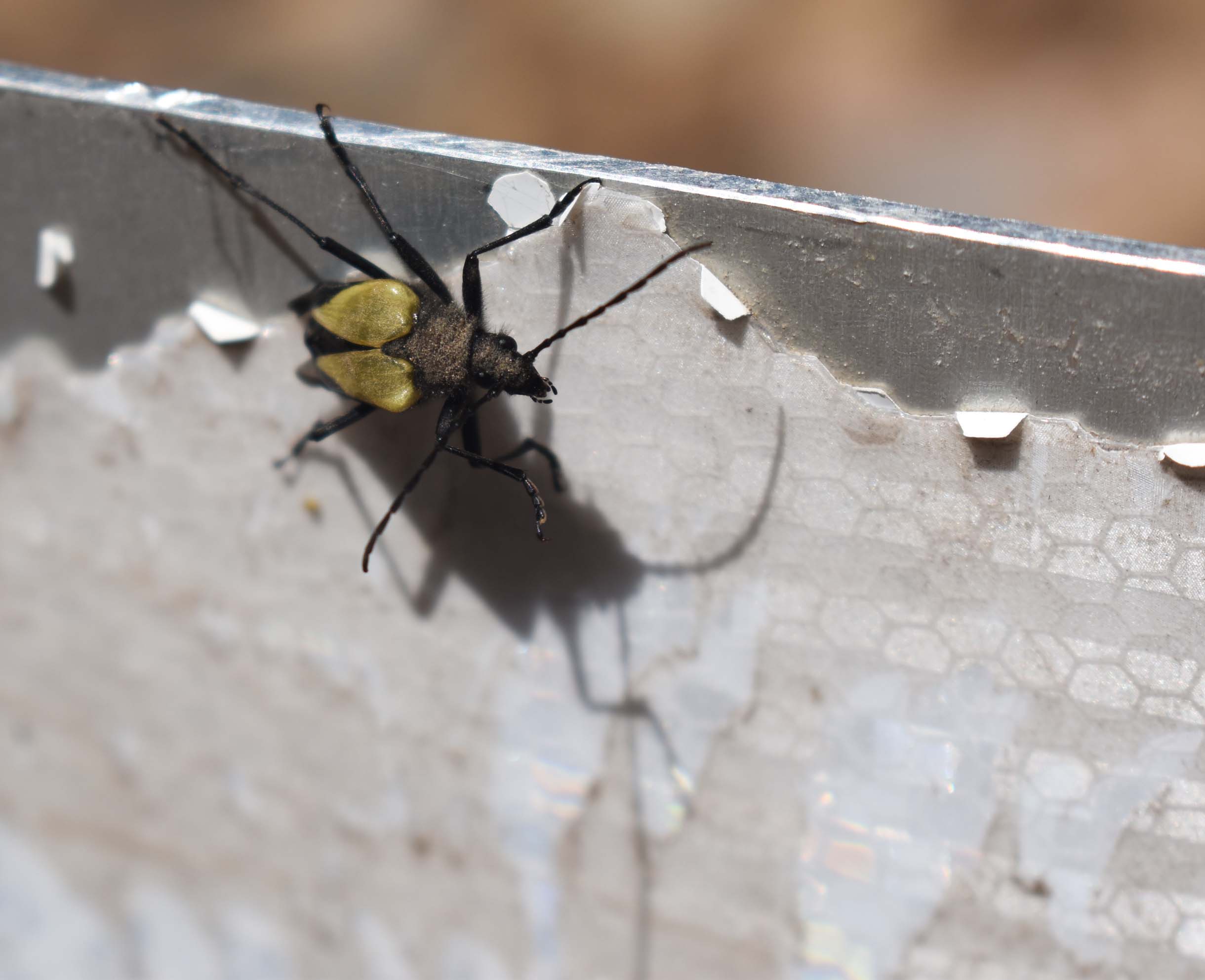
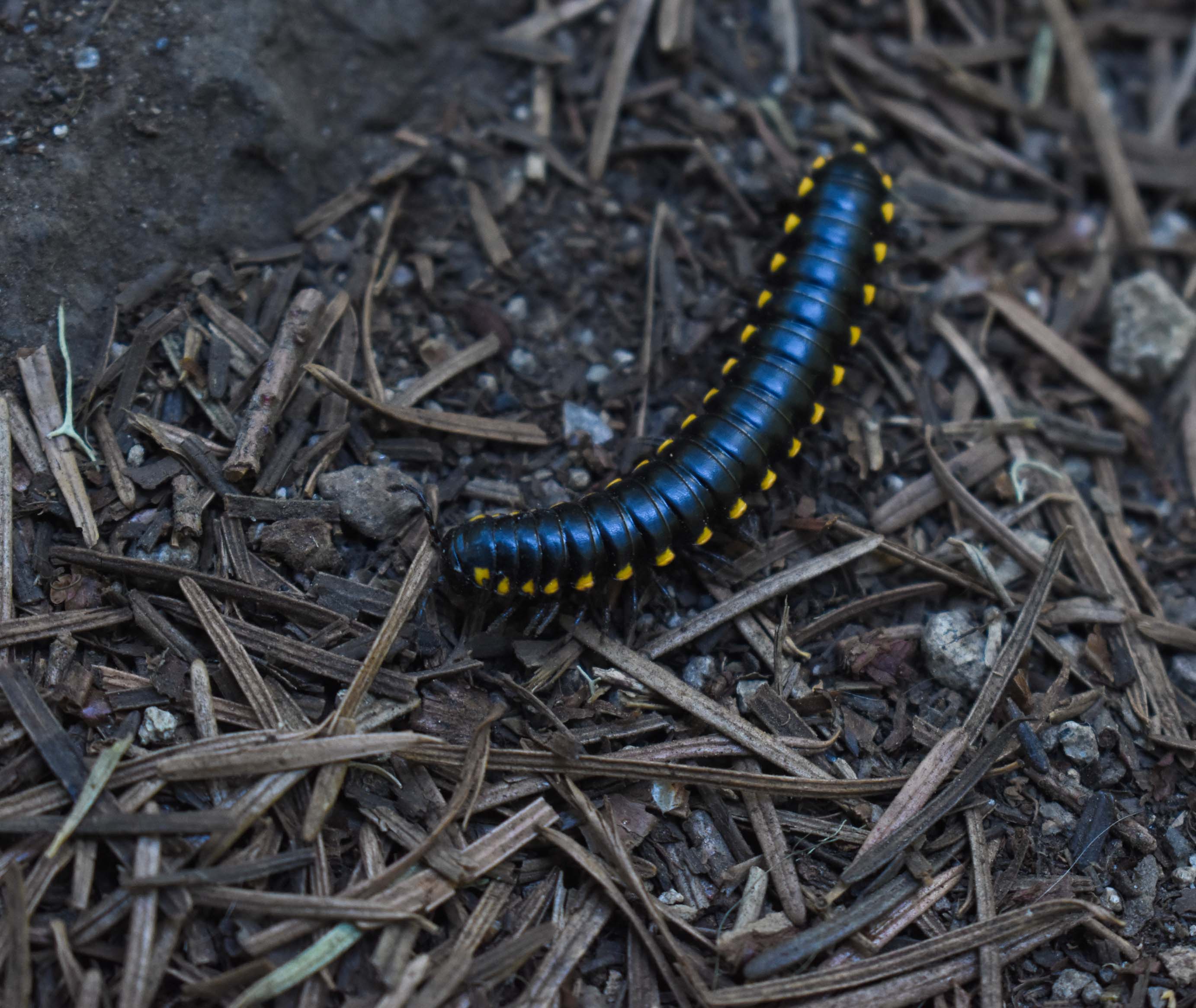
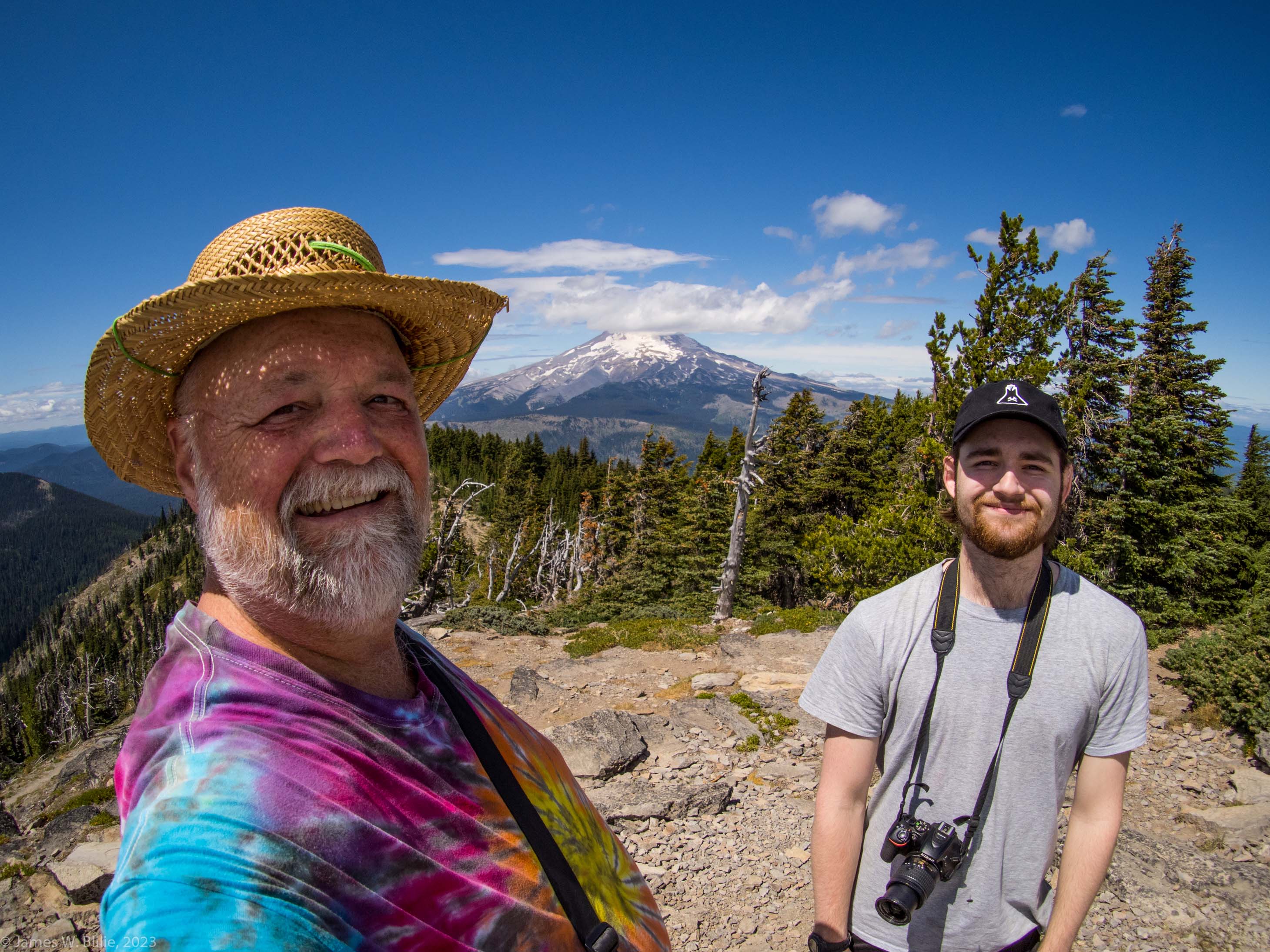
It’d be handy to get updates for every comment – keen to know the IDs, ‘specially if it’s a bumblebee or carpenter bee?
Learned that on WEIT – carpenter bee. Mind blown.
A great set of pictures all around, but I too favor the coyote picture. It is gorgeous!
No doubt you’ve heard it before, but your son looks very much like you, jblilie!
The first bird looks like a Says Phoebe
I agree, Say’s Phoebe.
Thanks!
Lovely, peaceful pix to start off the day. Thanks!
Beautiful photos!
Telling chipmunk species apart is not for the faint of heart….
Lovely photos, thank you! The creatures and the scenery look beautiful and amazing.
As an aside: Am I the only one who cannot see (or hear) the words “ground squirrel” without thinking of a waiter asking, “And would you like some fresh, ground squirrel on your salad (or pasta)?”
As of 7:33pm MST you were… Though I doubt I’ll see another ground squirrel and NOT think of it. You nut!
And the lighting on the Says phoebe is truly lovely. May Jamie continue to excel.
Wonderful photos! I love the lighting on the top photo of the Western Kingbird.
Thank you for these and hope to see more!
A great set. It’s fun for me to look up stuff by using the tools in BugGuide, which lets you search for critters state by state so long as you can first narrow it down a little.
So from that, the Bumblebee looks like Bombus californicus, the California Bumble Bee.
The spider looks like a kind of sac spider (I “feel” that is correct. I did not search further). The bite of sac spiders can be nasty, btw.
The beetle will be a “flower” Long-horn beetle of some sort. These are beetles that spend most of their time on flowers, eating pollen. To BugGuide it looks like Pachyta armata.
Thanks!
Nice potpourri of critters of the Pacific Northwest—many of which I’ve see as well but have never photographed.
Don’t give up on reader photos yet!! Going to Borneo in March. Proboscis monkeys and sun bears on the agenda
The bird in the first photo is a Say’s Phoebe.
Thanks!
Nice to see these local critters. Yes, Steller’s Jays are good Red-tail hawk mimics. I don’t know if they mimic anything else. I imagine they do it to intimidate other birds, but who knows?
Very nice compositions in these photos and some superb lighting. Also love the tie-dye! 🙂
We make all of our own tie-dye. Pretty much all I wear!
https://www.jwbliliephoto.net/M/tie-dye/Tie-Dye_Instructions_30-Oct-2016.pdf
One day sitting under a tree in my yard I heard a young scrub jay trying out a dozen different bird calls, but it’s the only time I’ve heard that.
Cool! We love our Scrub Jays too.
I would have guessed it was a yellow-faced bumblebee (Bombus vosnesenskii) but I can’t enlarge the picture to see the face up close.
I’ll go out on a limb and suggest that the long-horn [cerambycid] beetle with the broad yellow shoulders is Pachyta armata. [Pity I gave away my 5-volume set of Beetles of the Pacific Northwest.]
Thanks!